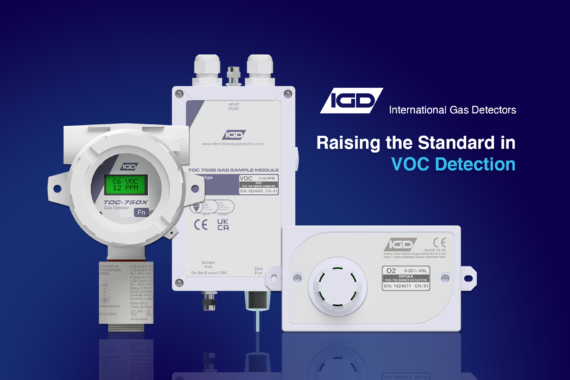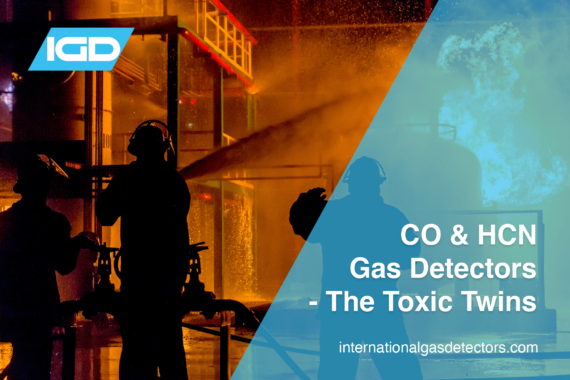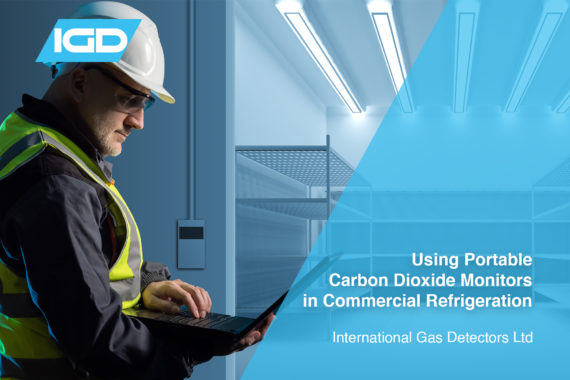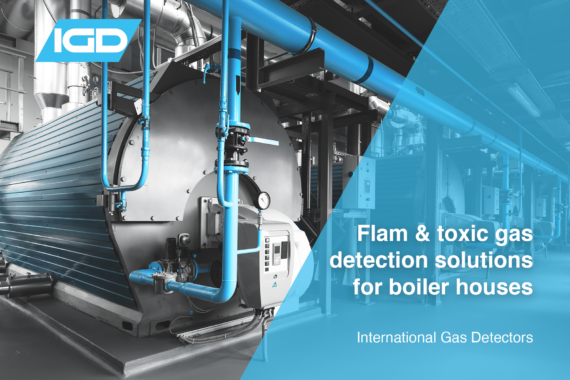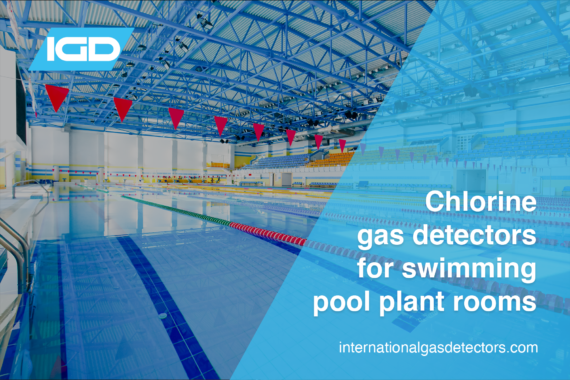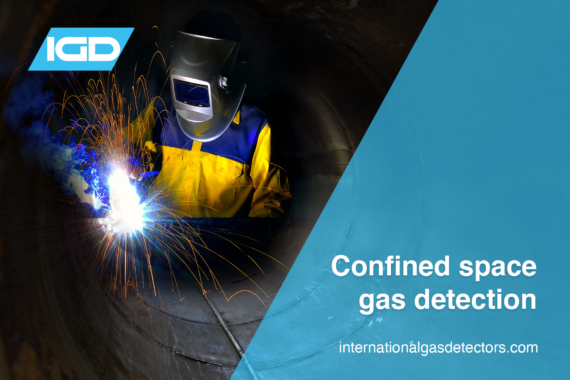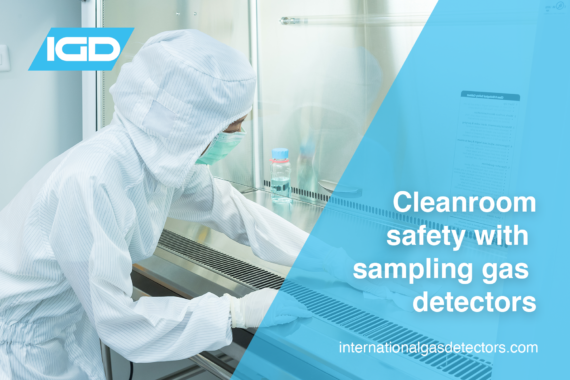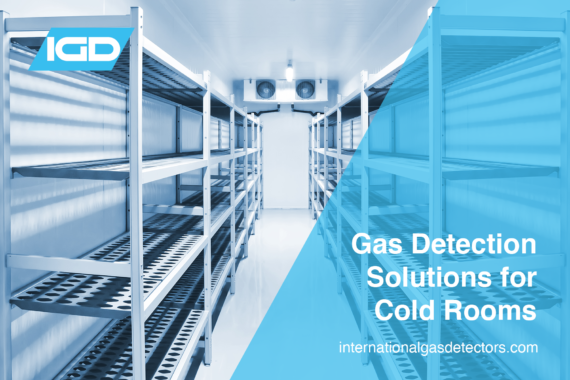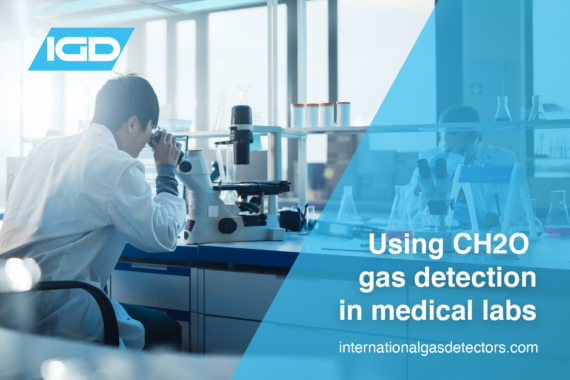International Gas Detectors Ltd are proud to introduce the release of a new range of PID (VOC) fixed detectors, as well as a new range of portable VOC detectors. These two big additions to our product range allow us to offer a full VOC detector range and provide the best possible detection for our customers. IGD have over a 100+ years manufacturing experience in gas detection and over two decades of PID detection experience. Read our article to learn how we are raising the standard for VOC detection.
CO and HCN Gas Detectors – The Toxic Twins
Firefighters are continuously exposed to many seen and unseen dangers during their day to day activities. One such unseen hazard is the combination of carbon monoxide (CO) and Hydrogen Cyanide (HCN) when tackling fires. Both of these gases are toxic in their own right but combined together they create what is termed the Toxic Twins. Our latest article highlights the toxicity of these gases on their own and also combined together. Plus our solutions for firefighters in the form of the POLI portable.
Why do I Need a Carbon Dioxide Monitor for my Classroom?
In the fight against COVID-19 the UK Government has announced the purchase of portable carbon dioxide monitor, as CO2 is an indication of air quality in the environment. Too much CO2 indicates poor ventilation and increase in COVID-19 spreading. With this in mind our article aims to discuss the UK Governments CO2 monitoring recommendations and how the iGAS portable CO2 monitor is the ideal solution for classroom CO2 monitoring.
Using Portable Carbon Dioxide Monitors in Commercial Refrigeration
Commercial refrigeration are now moving to use carbon dioxide as their choice for refrigerant gas, due to its low global warming potential. However CO2 is a toxic gas under UK COSHH and US OSHA regulations. This means you need to have systems in place to monitor for any Co2 leaks. Importantly those visiting commercial refrigeration sites need to protect themselves from the toxic effects of CO2. Our article addresses this issue and why you need a portable CO2 detector and our iGAS CO2 portable monitor.
Flammable & Toxic Gas Detection Solutions for Boiler Houses
Boiler equipment is usually stored in its own room, known as a boiler house, which is typically unventilated. Boiler houses are often visited infrequently, meaning that if there are toxic or flammable gases leaking, they are more likely to go undetected. Read our article to learn why you need an automatic gas detection system and our gas detection solutions.
Using Chlorine Gas Detectors in Swimming Pool Plant Rooms
Imagine going to a swimming pool and returning home with severe respiratory problems. The chances of this happening are high in public swimming pools that do not use chlorine gas detectors. Chlorine i
Confined Space Gas Detectors—What You Need to Know
A ‘confined space’ as defined for this article is any fully enclosed space where a risk may exist from noxious fumes, reduced oxygen levels or flammable gases. Site workers must often enter such space
Maintaining Cleanroom Safety with Sampling Gas Detectors
Cleanrooms are enclosed facilities specially designed to control levels of airborne contamination. Depending on the particle concentration (per m3), clean rooms are categorized into nine ISO classes. Class 1 being the purest and containing only 12 particles per cubic meter. By contrast, the particulate concentration of ambient air is around 35 million particles per cubic meter. Sampling gas detectors are used to monitor for safety cleanroom environments in scientific research and manufacturing industries.
Read our article to learn more.
Gas Detection Solutions for Cold Room Applications
Cold room units (or walk-in freezers) are an integral part of the food and beverage processing industries. Typical refrigerant gases include carbon dioxide, ammonia, and hydrocarbons such as propane, isobutane and propylene. Older cold storage solutions still use freon gases such as R134a. Thus, a versatile range of gas detection solutions are required for cold storage applications.
Read our article to learn more.
Using Formaldehyde Gas Detectors in Medical Labs
Formaldehyde (CH2O) is a fairly simple chemical compound that is naturally produced in low volumes through regular cellular metabolism. It is best known for its profound anti-bacterial characteristics hence its long-standing application as one of the main preservatives used in mortuaries. However, formaldehyde solutions—where the gas is mixed with an aqueous mobile phase—are extremely valuable to a wide range of medical research areas. They are routinely used to deactivate viruses for vaccine manufacturing, for instance.
Our article discusses the toxic hazards of formaldehyde and our formaldehyde gas detector solutions.

